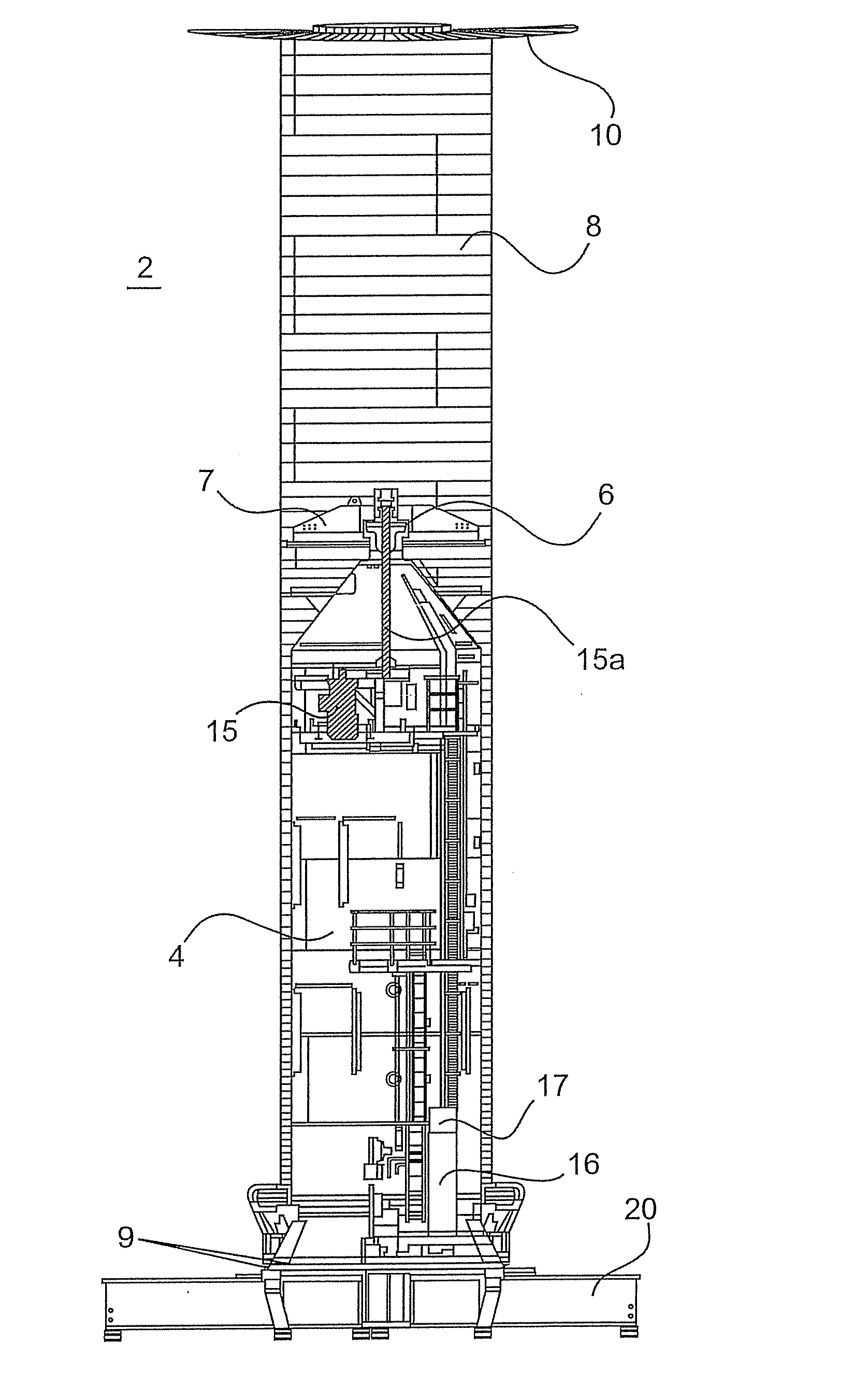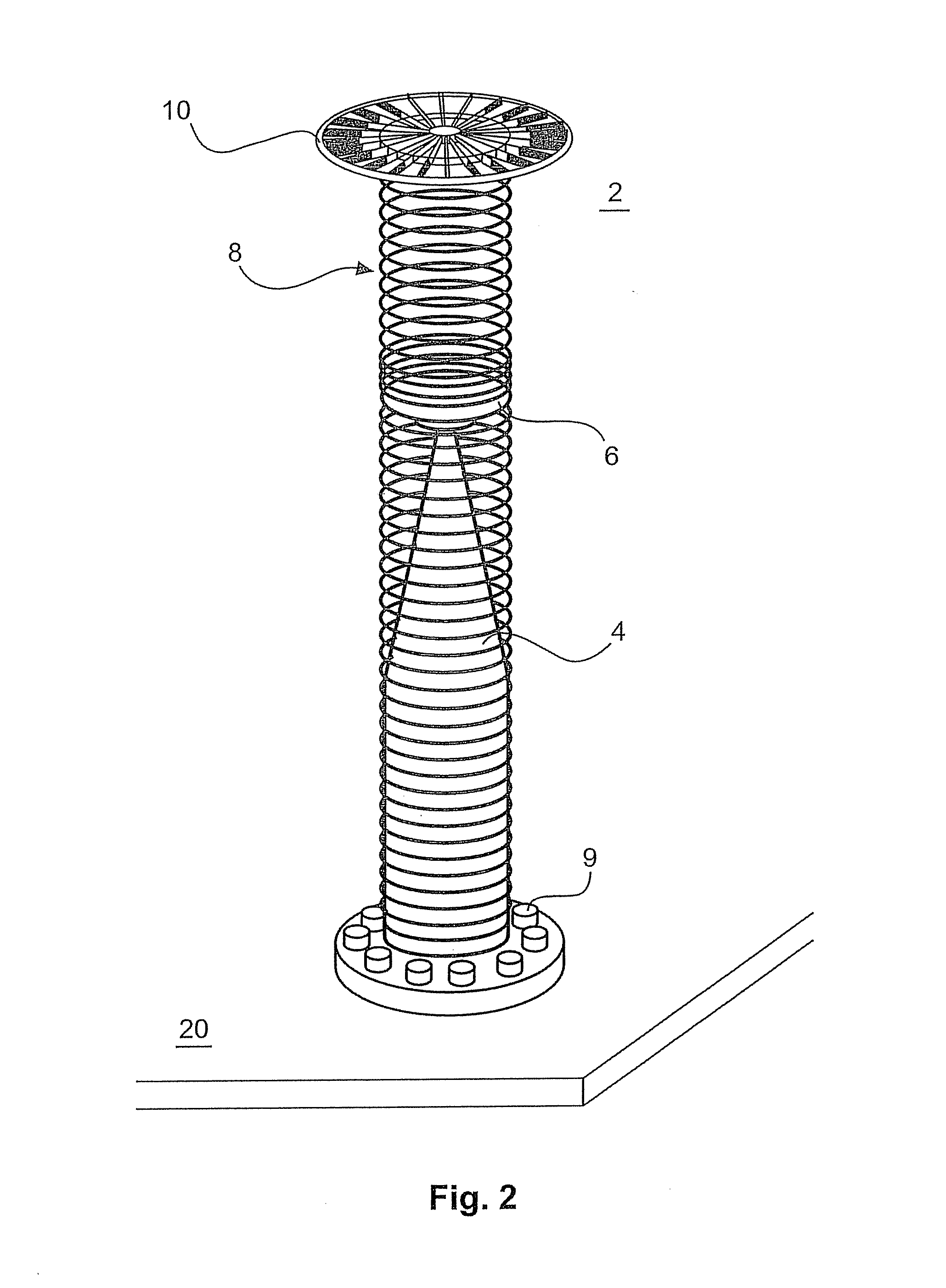Magnus rotor
a technology of rotor and rotor body, which is applied in the direction of air-flow influencers, marine propulsion, vessel construction, etc., can solve the problems of affecting operation or making it impossible, affecting the efficiency of the magnus rotor drive, and affecting the surrounding area, so as to achieve greater or and faster heating and thawing. , the effect of increasing the efficiency
- Summary
- Abstract
- Description
- Claims
- Application Information
AI Technical Summary
Benefits of technology
Problems solved by technology
Method used
Image
Examples
first embodiment
[0034]FIG. 4 shows a diagrammatic simplified side view of the Magnus rotor 2 with a heating device 3 in a The Figure shows the rotor 8 with end plate 10 and hub 7 as the parts which move in operation of the Magnus rotor 2. They are supported by way of the drive shaft 15a (not shown) which also rotates, on the bearing 6 of the carrier 4.
[0035]Shown in the interior of the carrier 4 as a heating device 3 is a fan heater 3 provided in the upper region of the carrier 4. The fan heater 3 produces hot air by drawing in air from the surroundings, that is to say from the internal space 50 in the carrier 4, and moving it for example past windings heated by electric current. In that case the air which is drawn in absorbs heat from the windings through which current flows. That heated air is then blown out by the fan heater 3. That is effected by way of at least one fan heater tube 3a connected to the discharge opening of the fan heater 3. That heating air tube 3a leads to at least one carrier...
second embodiment
[0038]FIG. 5 shows a diagrammatic simplified side view of the Magnus rotor 2 with a heating device 3 in a FIG. 5 shows substantially the components of FIG. 4. It additionally shows the base plate 20 or the ship deck or the like, on which the Magnus rotor 2 is fixed by means of bolts or screws 9.
[0039]In this second embodiment the heating device 3 is arranged in the lower region of the carrier 4 and the fan heater tubes 3a and carrier openings 4a are provided in radially oriented relationship in the region of the Magnus rotor 2 in which the outside wall of the rotor 8 extends around the carrier 4. In this embodiment therefore the hot air is taken past the outside wall of the rotor 8 almost over the entire height of the rotor.
[0040]In that way the outside wall can also be heated and thawed out over its entire height. In this embodiment however a part of the heat of the hot air is already delivered in the lower region of the rotor 8 to the outside wall thereof so that only still warm ...
PUM
 Login to View More
Login to View More Abstract
Description
Claims
Application Information
 Login to View More
Login to View More - R&D
- Intellectual Property
- Life Sciences
- Materials
- Tech Scout
- Unparalleled Data Quality
- Higher Quality Content
- 60% Fewer Hallucinations
Browse by: Latest US Patents, China's latest patents, Technical Efficacy Thesaurus, Application Domain, Technology Topic, Popular Technical Reports.
© 2025 PatSnap. All rights reserved.Legal|Privacy policy|Modern Slavery Act Transparency Statement|Sitemap|About US| Contact US: help@patsnap.com



